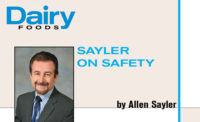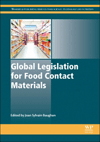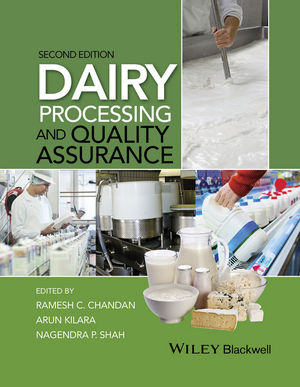These keys can open the doors to FSMA’s kingdom
Some free training material is helpful yet confusing. So you will need to do additional editing and fine-tuning to create documents that comply with regulatory requirements.

The Food and Drug Administra-tion’s time-clock for enforcing the most important FSMA regulation, the “Preventive Controls for Human Foods (PCHF)” started in mid-September 2016. As I write this in early December, it appears that FDA will be training its field investigators and regional milk specialists well past the end of 2016. This is important as FDA leadership has committed to not beginning the FSMA PCHF enforcement process until the field staff is completely trained.
Getting past the fog and mystery
In any case, it is likely that a number of non-Grade-A dairy plants will be experiencing FDA enforcement of the PCHF requirements in 2017. The great unanswered question is whether these large plants are ready.
Short answer: No. Based on preventive control-based assessments we have conducted, it appears that some dairies have missed the mark in upgrading written food safety systems, despite their investment in resources, training and consultants.
What are the “keys” to unlocking the preventive controls kingdom to remove the fog and mystery that seems to beguile the industry?
FDA and the Food Safety Preventive Controls Alliance (FSPCA) have provided some wonderful keys to unlock the preventive controls kingdom in order to provide a meaningful self-assessment of how a dairy plant might do during a full FDA PCHF enforcement inspection. The document is Volume 1.2 of the Preventive Controls training manual available for free at http://tinyurl.com/z3m5kfo.
However, this training material is at the same time helpful and confusing, with lots of details of microbiology and regulatory requirements, but short on practical “how-to” advice, usable forms and consistency with private food safety certification programs such as Safe Quality Foods, the British Retail Consortium, the International Food Standards and FSSC22000. These private food safety certification systems are used by almost all dairy plants in the United States to build their written food safety program. In order to successfully convert these private food safety programs into PCHF-compliant food safety programs, a few keys are required. Here are six:
1. Build a complete set of written prerequisite programs. My company has a downloadable checklist of these programs along with the preventive controls reference for each prerequisite.
2. Complete product flow diagrams that include all raw material inputs, ingredient inputs, water, compressed air, packaging gases (if used), filters, screens and major processing steps.
3. Build a risk matrix table to identify reasonably foreseeable hazards that are a higher risk and those that are a lower risk.
4. Choose the right “key” to control the hazard once it is determined to be a higher risk or lower risk. A higher risk requires a preventive control. A lower risk requires a prerequisite control.
5. Download Appendix #1 of the FDA Hazard Analysis and Risk-Based Preventive Controls for Human Foods: Guidance for Industry at http://tinyurl.com/grs266z. Table 1E identifies potential biological hazards for dairy products. Table 2E identifies potential chemical hazards for dairy products. Table 3E identifies potential process-related biological, chemical and physical hazards for dairy products.
Together, these tables are FDA-created “safe harbor” areas where dairy plants can model their written hazard analysis against these FDA-identified hazards. You can have some confidence that a dairy plant’s food safety program is on the right track (using the right “keys”).
6. Use the following FDA guidance or industry documents to build credible preventive control programs for
- Recalls, http://tinyurl.com/6mvll6b
- Allergens, http://tinyurl.com/jst42d8
- Supply Chain Management, http://tinyurl.com/jsz2bdc
- Food Defense, http://tinyurl.com/cavw6qq
By utilizing publicly available references, FDA guidance documents and other keys, a dairy plant can conduct its own benchmarking of its food safety program against the PCHF. This will increase the likelihood that when FDA field investigators appear, your food safety program will have the right keys, resulting in no regulatory action against your plant.
For additional information on how to build and maintain a strong food safety program that will minimize recalls and market withdrawals, contact the Center for Food Safety & Regulatory Solutions (www.cfsrs.com).
Looking for a reprint of this article?
From high-res PDFs to custom plaques, order your copy today!










